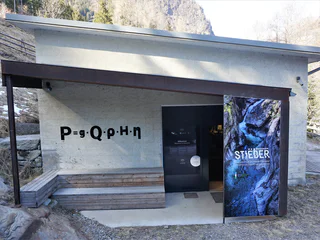
1/4
MuseumHinterPasseier – Stiëber Mooseum in Moos/Moso
Moso in Passiria/Moos in Passeier, Moos in Passeier/Moso in Passiria, Meran/Merano and environs

1/4
Moso in Passiria/Moos in Passeier, Moos in Passeier/Moso in Passiria, Meran/Merano and environs

Nova Ponente Centro/Deutschnofen Dorf, Deutschnofen/Nova Ponente, Dolomites Region Eggental

1/4
S. Maddalena/St. Magdalena - Funes/Villnöss, Villnöss/Funes, Dolomites Region Villnösstal

1/5
Siusi/Seis, Kastelruth/Castelrotto, Dolomites Region Seiser Alm

1/2
Bolzano Centro/Bozen Zentrum, Bolzano/Bozen, Bolzano/Bozen and environs

1/6
Moso in Passiria/Moos in Passeier, Moos in Passeier/Moso in Passiria, Meran/Merano and environs

1/2
Plars di Mezzo/Mitterplars, Algund/Lagundo, Meran/Merano and environs

Glorenza/Glurns, Glurns/Glorenza, Vinschgau/Val Venosta

1/4
Castelrotto/Kastelruth, Kastelruth/Castelrotto, Dolomites Region Seiser Alm

1/6
Giovignano/Tschiffnon, Feldthurns/Velturno, Brixen/Bressanone and environs

1/5
Silandro/Schlanders, Schlanders/Silandro, Vinschgau/Val Venosta

1/5
Burgusio/Burgeis, Mals/Malles, Vinschgau/Val Venosta

1/3
Merano/Meran, Meran/Merano, Meran/Merano and environs

Campo Tures/Sand in Taufers, Sand in Taufers/Campo Tures, Ahrntal/Valle Aurina

1/3
Merano/Meran, Meran/Merano, Meran/Merano and environs

1/4
S. Maddalena/St. Magdalena - Funes/Villnöss, Villnöss/Funes, Dolomites Region Villnösstal

1/4
Laion paese/Lajen Dorf, Lajen/Laion

1/2
Sesto/Sexten, Sexten/Sesto, Dolomites Region 3 Zinnen

1/4
Varna/Vahrn, Vahrn/Varna, Brixen/Bressanone and environs

1/4
Luson/Lüsen, Lüsen/Luson, Brixen/Bressanone and environs

Niederdorf/Villabassa, Dolomites Region 3 Zinnen

1/4
S. Genesio Atesino/Jenesien, Jenesien/San Genesio Atesino, Bolzano/Bozen and environs

1/3
Merano/Meran, Meran/Merano, Meran/Merano and environs

1/2
Glorenza/Glurns, Glurns/Glorenza, Vinschgau/Val Venosta

1/3
Stava/Staben, Naturns/Naturno, Meran/Merano and environs

Merano/Meran, Meran/Merano, Meran/Merano and environs

1/2
Pietrarossa/Rotwand, Ritten/Renon, Bolzano/Bozen and environs

1/2
Sesto/Sexten, Sexten/Sesto, Dolomites Region 3 Zinnen

1/2
Sesto/Sexten, Sexten/Sesto, Dolomites Region 3 Zinnen

Senale/U.L. Frau i.W., U.L.Frau i.W.-St. Felix/Senale-S.Felice, Meran/Merano and environs